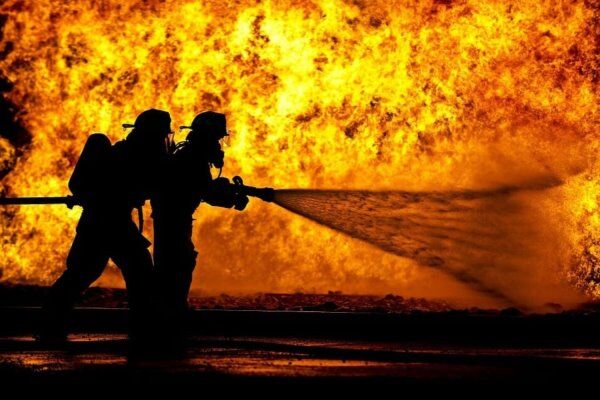No products in the cart.
Certified Passive Fire Protection Specialist
₹6,500.00 ₹3,250.00
50% Discount will end in
To train professionals to design, assess, and implement passive fire protection systems that prevent fire spread and enhance structural safety in buildings.
Description
Certification Name: Certified Passive Fire Protection Specialist
Global Occupational Skill Standard – GOSS ID: GOSS/FS/CPFPS/V1
Duration: One Month.
Eligibility: Graduation or Equivalent is required.
Objective: The Certified Passive Fire Protection Specialist course is designed to provide in-depth knowledge of fire-resistant construction methods and materials that prevent or slow the spread of fire and smoke. The course covers key components of passive fire protection such as fire-rated walls and doors, firestopping systems, fireproof coatings, compartmentation, structural fire resistance, and penetration seals. Participants will learn to interpret and apply building codes and standards such as NFPA, IBC, IS codes, and UL listings.
Certification: Within 5 days after Completion of Online Assessment.
Get ready to join the Journey to become a GSDCI Certified Professional – International Certification and Assessment Body.
Steps to become a GSDCI Certified Professional:
Step 1: Select your certification you want to pursue.
Step 2: Click on get certified tab, new pop up window will open.
Step 3: Click on pay certification fee, you will be redirected to billing details page.
Step 4: Fill your details and click on pay certification fee, You will be redirected to payment gateway, pay fee by any available options like Card(Debit/Credit), Wallet, Paytm, Net banking, UPI and Google pay.
Step 5: You will get Login Credentials of Online E-Books and Online assessment link on your email id, within 48 hrs of payment.
Step 6: After completion of online assessment, you can download your Certificate Immediately.
Assessment Modules:
Module 1: Introduction to Passive Fire Protection (PFP) and Fire Dynamics: Understanding fire behavior and development in built environments, Role and importance of passive fire protection in fire safety, Difference between passive and active fire protection systems, Key components of a passive fire strategy, Fire resistance ratings and time-temperature curves, Regulatory frameworks and standards (NFPA, EN, ISO, NBC).
Module 2: Fire-Resistant Construction Materials and Systems: Types of fire-resistant materials (gypsum, calcium silicate, concrete, mineral wool), Fire-rated walls, floors, ceilings, and partitions, Compartmentation and fire zone creation, Fire-resistive glazing and doors, Penetration sealing and firestopping systems, Testing standards for material performance (ASTM E119, BS 476, EN 1364).
Module 3: Firestopping and Compartmentation Techniques: Penetration sealing for cables, pipes, and ducts, Installation techniques for fire collars, wraps, and mortars, Fire-resistant joint systems and movement accommodation, Fire dampers and barriers in ducting systems, Ensuring integrity of fire-rated walls and floors, Inspection and maintenance of firestop systems.
Module 4: Structural Fire Protection and Load-Bearing Safety: Protection of steel, concrete, and timber structural elements, Intumescent coatings and sprays: application and performance, Vermiculite sprays and cementitious fireproofing, Encapsulation systems and cladding techniques, Passive fire design for industrial and high-rise buildings, Testing and certification of structural protection methods.
Module 5: Installation Guidelines, Quality Assurance, and Inspection: Manufacturer instructions and best practices for PFP installation, Third-party certification and approved installer systems, Site inspection protocols and compliance verification, Documentation and photographic evidence for quality assurance, Maintenance schedules and access panel inspections, Use of PFP inspection checklists and audit tools.
Module 6: Codes, Compliance, and Project Integration: National and international code compliance (NBC Part IV, NFPA 5000, IBC), Role of passive fire protection in overall fire safety design, Coordination with architects, engineers, and fire consultants, Fire risk assessment integration and PFP documentation, Common non-compliance issues and rectification measures, Case studies on PFP effectiveness and failure analysis.
GSDCI Online Assessment Detail:
- Duration- 60 minutes.
- Number of Questions- 30.
- Number of Questions from each module: 5.
- Language: English.
- Exam Type: Multiple Choice Questions.
- Maximum Marks- 100, Passing Marks- 50%.
- There is no negative marking in any module.
| Marking System: | |||
| S.No. | No. of Questions | Marks Each Question | Total Marks |
| 1 | 10 | 5 | 50 |
| 2 | 5 | 4 | 20 |
| 3 | 5 | 3 | 15 |
| 4 | 5 | 2 | 10 |
| 5 | 5 | 1 | 5 |
| 30 | 100 | ||
| How Students will be Graded: | |||
| S.No. | Marks | Grade | |
| 1 | 91-100 | O (Outstanding) | |
| 2 | 81-90 | A+ (Excellent) | |
| 3 | 71-80 | A (Very Good) | |
| 4 | 61-70 | B (Good) | |
| 5 | 50-60 | P (Pass) | |
| 6 | 0-49 | F (Fail) | |
Benefits of Certification:
🌍 1. Global Recognition & Credibility – Stand out worldwide with a certification that opens doors across borders. Trusted by employers, respected by institutions, and recognized in over 100 countries.
📜 2. Quality Assurance through ISO Certification – Certified to global ISO standards, our programs deliver excellence, consistency, and a benchmarked learning experience that speaks for itself.
💼 3. Career Advancement & Employability – Enhances your resume and increases chances of promotions or job offers.
🤝 4. Non-Profit Trust Factor – Certifications from non-profit organizations are mission-driven rather than profit-driven.
📚 5. Access to Verified Learning & Resources – Often includes e-books, mock tests, and online support without hidden costs.
🔍 6. Transparency & Online Verification – Certifications come with a unique Enrolment ID for easy online verification by employers and institutions.
⏳ 7. Lifetime or Long-Term Validity – Certifications usually have lifetime validity or long-term recognition, reducing the need for frequent renewals.

Reviews
There are no reviews yet.